Vachellia farnesiana, (=Acacia farnesiana), Sweet Acacia
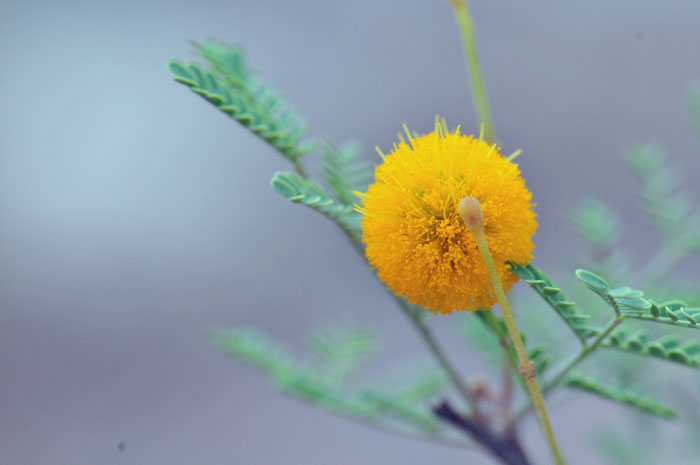
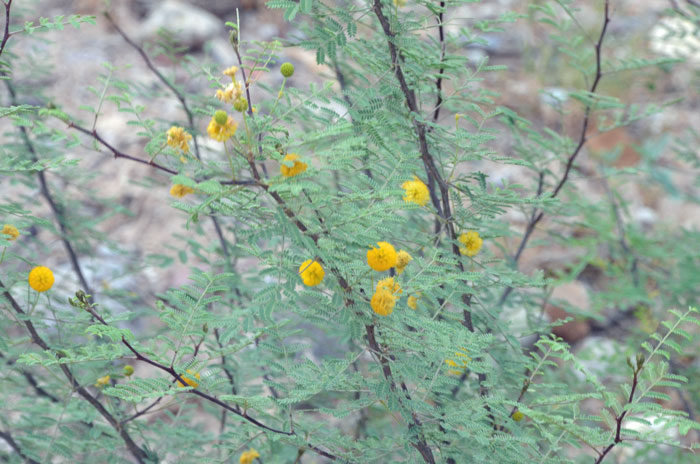
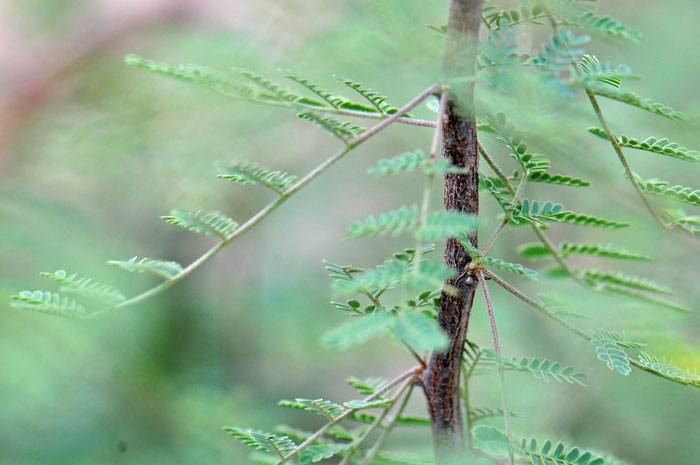
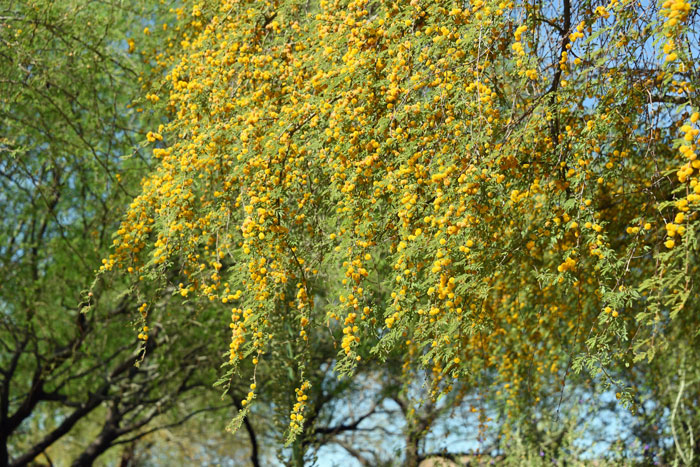
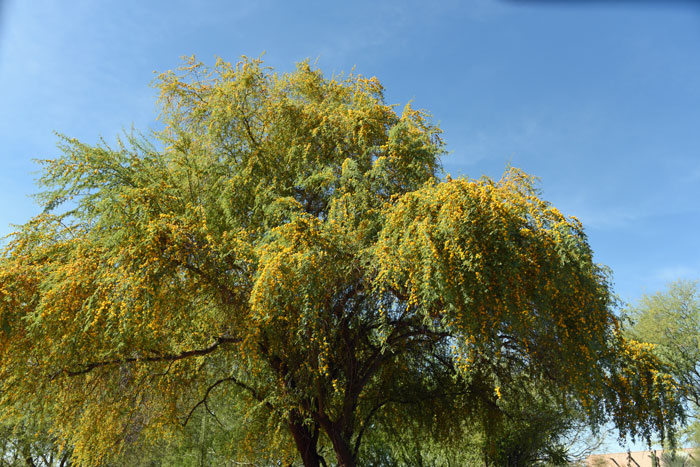
Scientific Name: Vachellia farnesiana, (=Acacia farnesiana)
Common Name: Sweet Acacia
Also Called: Aroma, Aroma Amarilla, Cassia, Coastal Scrub Wattle, Desert Acacia, Ellington Curse, Huisache, Kandaroma, Klu, Klu Bush, Mealy Acacia, Mealy Wattle, Needle Bush, Perfume Acacia, Popinac, Texas Huisache, Western Sweet Acacia (Spanish: Huizache, Vinorama)
Family: Fabaceae or Leguminosae Family
Synonyms: (Acacia farnesianna, Acacia minuta, Acacia minuta subsp. densiflora, Acacia smallii, Mimosa farnesiana, Pithecellobium minutum, Vachellia densiflor)
Status: Native
Duration: Perennial
Size: Up to 20 feet (6 m) high or more, spread also to 20 feet (6 m).
Growth Form: Small tree or shrub, handsome, multi-trunk, brown; drooping branches, forms thickets; armed with sharp 1 inch (2.54 cm) thorns or spines; aromatic; plants ferny or feathery in appearance; may form dense thickets; bark smooth, olive green maturing toward bray brown, becoming furrowed and scaly.
Leaves: Light green, or gray-green; semi-deciduous; alternate; the leaves are attractive, finely divided (bipinnately) compound, ferny or feathery.
Flower Color: Yellow or orange-yellow; flowers very showy, fragrant; 1 to 6 hanging (2 to 3 inches; 5 to 7.7 cm) globose heads emerge from axils; fruit is a 1 to 3 inch ( cm) woody dark brown elongated rounded pod.
Flowering Season: January, February, March April to November
Elevation: 2,500 to 4,000 feet (762-1,219 m).
Habitat Preferences: Variable soil conditions from sandy, sandy loam, caliche and alkaline soils; grows in desert canyons and is drought tolerant.
Recorded Range: In the United States Sweet Acacia is found in the southern border states from California east to Georgia including AL, AZ, CA, FL, LA, MS, NM and TX. It is also native throughout Baja California, most of Mexico south through Central America. Vachellia farnesiana is also native to northern Australia and southern Asia; widely cultivated. Note: this species exact native range is not clear although its point of origin is Mexico and Central America. In Arizona, Sweet Acacia is found in the central southern and southeast parts of the state.
North America & US County Distribution Map for Vachellia farnesiana.
U.S. Weed Information: UnknownInvasive/Noxious Weed Information: Unknown
International Invasive/Noxious Weed Information: 1The Centre for Agriculture and Bioscience International, (CABI), and 2The Invasive Species Compendium (ISC) has identified Vachellia farnesiana as “. . . an aggressive colonizer and is regarded as an invasive weed both in parts of its native range and where introduced, notably in Australia, the USA, and some Pacific and Caribbean islands. A. farnesiana is mostly a weed of pastures and able to form dense thorny thickets, which may cause injury to livestock and may shade out native fodder species”.
1The Centre for Agriculture and Bioscience International (CABI), Wallingford, Oxfordshire, England; The US Department of Agriculture is a lead partner with CABI.
2The Invasive Species Compendium (ISC) is an encyclopedic resource that brings together a wide range of different types of science-based information to support decision-making in invasive species management worldwide.
Wetland Indicator: In North America Vachellia farnesiana has the following wetland designations: Arid West, FACU Atlantic and Gulf Coastal Plain, FACU Great Plains, FACU Western Mountains, Valleys, and Coast, FACU
FACU = Facultative Upland, usually occur in non-wetlands, but may occur in wetlands
Threatened/Endangered Information: Unknown
Genus Information: In North America there are 34 species for Vachellia. Worldwide, The Plant List includes 32 accepted species names and a further 37 scientific names of infraspecific rank for Vachellia
The genus Vachellia was published in 1834 by Robert Wight, (1796-1872) and George Arnott Walker (1799-1868).
In the Southwestern United States: Arizona has 3 species of Vachellia, California has 1 species, Nevada has 0 species, New Mexico has 4 species, Texas has 6 species, Utah has 0 species. Data approximate, subject to revision.
There is 1 variety in Vachellia farnesiana:
Vachellia farnesiana, var. pinetorum, Pineland Acacia
Comments: Sweet Acacia is rare in Arizona and limited in distribution. Populations occur in central and southern parts of the state in Maricopa County and the Baboquivari Mountains, Pima Arizona and near Ruby, Santa Cruz County, Arizona. It has an exceptional fragrance, is drought tolerant and a popular desert landscape plant in the southwest. The fragrant flowers are widely used in the perfume industry in Europe. The perfume is call "cassie" and described as "delicious".
Also see in Southwest Desert Flora also see similar species; Whitethorn Acacia, Vachellia constricta and Catclaw Acacia, Senegalia greggii.
Deer and Javelina and likely rodents eat the seed pods; many species of mammals and birds use this species for both nesting and cover by all species.
Insects are known to feed on the nectar from its flowers.
The genus Vachellia was published in 1834 by Robert Wight, (1796-1872) and George Arnott Walker (1799-1868).
The species epithet “farnesiana” (farnesia'na:) was named by Tobias Aldini in 1625. The name "farnesiana" was taken by Aldini because of the plants that he identified from the Farnese Gardens in Rome. However, the original seeds of this species were collected in Santo Domingo (now the Dominican Republic) and germinated in 1611. Aldini included an illustration of the plant which Linnaeus used as a basis for his taxon Mimosa farnesiana in 1753 and later, in 1806 Carl Ludwig Willdenow moved this taxon to the genus Acacia. Ultimately the genus was moved to its current name Vachellia.

